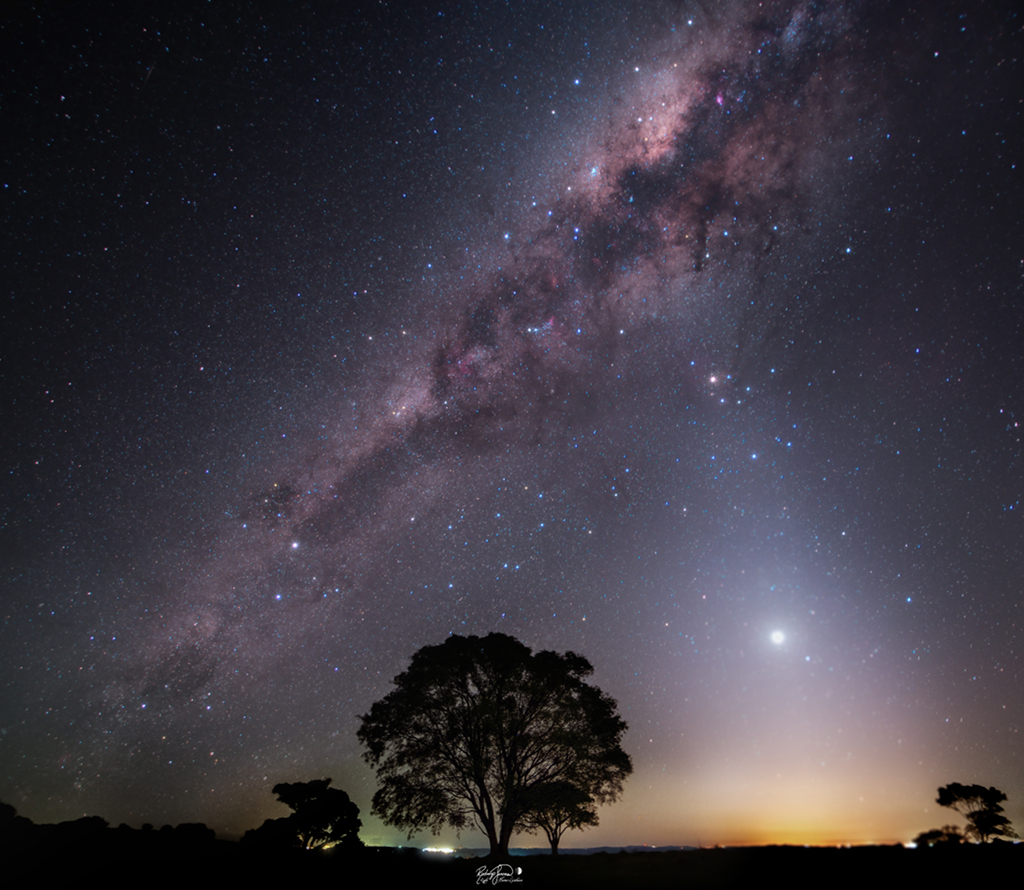2021年10月2日
A Light and Dusty Night
Image Credit & Copyright: Rodrigo Guerra
Explanation: Posing as a brilliant evening star, Venus lies near the western horizon in this southern hemisphere, early spring, night skyscape. To create the composite view exposures tracking the sky and fixed for the foreground were taken on September 25 from Cascavel in southern Brazil. In view after sunset, Venus appears immersed in a cone of zodiacal light, sunlight scattered from dust along the Solar System’s ecliptic plane. In fact from either hemisphere of planet Earth, zodiacal light is most visible after sunset near a spring equinox, (or before sunrise near an autumn equinox) when its luminous arc lies at steep angles to the horizon. Extending above the sunset on this night, the zodiacal light reaches toward rich starfields and immense interstellar dust clouds in the bulge of the central Milky Way. Follow along the Milky Way from the central bulge back toward the horizon and you’ll spot the closest star system to the Sun, Alpha Centauri, a mere 4.37 light-years away.
Tomorrow’s picture: holographic tea time
星光和尘埃织就的夜晚
影像提供与版权: Rodrigo Guerra
说明: 在这幅南半球初春的夜空影像里,金星以明亮的昏星之姿,低悬在西方的地平线附近。用以组成这幅影像的星空以及地景照片,则都是在9月25日摄于巴西南部的卡斯卡韦尔市。在这片日落后的景观里,金星看似沉浸在太阳系黄道面尘埃散射阳光所产生的锥状黄道光之内。在每年的春分日落后或秋分日出前,当黄道光弧以大角度伸出地平面之时,皆是地球南北半球的住民观赏黄道光的好时机。在拍照的这个晚上,黄道光看似伸向银河鼓核附近的富星场和大片星际尘埃云。除此之外,如果从银核沿着银河盘面反向朝地平线看,可找到最邻近太阳、距离只有4.37光年远的南门二恒星系统。
明日的图片: holographic tea time



